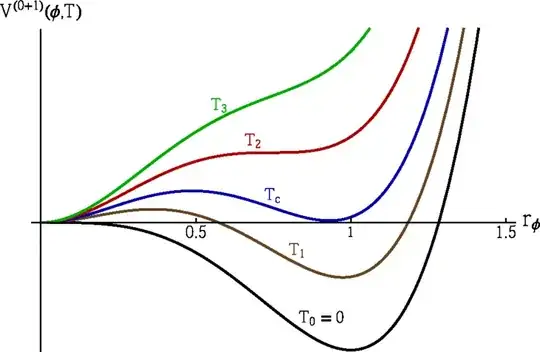I'm trying to piece together a coherent understanding of the EW symmetry breaking and its effect on early cosmology, from a number of somewhat incomplete sources. Any corrections to the following presumed steps or conclusion would be greatly appreciated. i) In the early universe, before freeze-out, the Higgs field energy was way up on the sides of its "sombrero" potential curve (very high energy level.) ii) Therefore no vacuum expectation value for the Higgs field iii) Thus no EW symmetry breaking iv) All the SU(2)XU(1) symmetric intermediate vector bosons (B and original W) were massless, weak mixing angle = 0 v) Thus the EW force was long range during this time (Until the Higgs field energy falls far enough to acquire the VEV and break the symmetry.) vi) Fermions massless
That seems to me to require a huge recomputation of most SM results and "constants" that would be very different from what we see in experiment today. Little or none of today's data and theory could be applied to that period. Do calculations in cosmology for this period account for this? Is there something missing or wrong in this line of reasoning?
